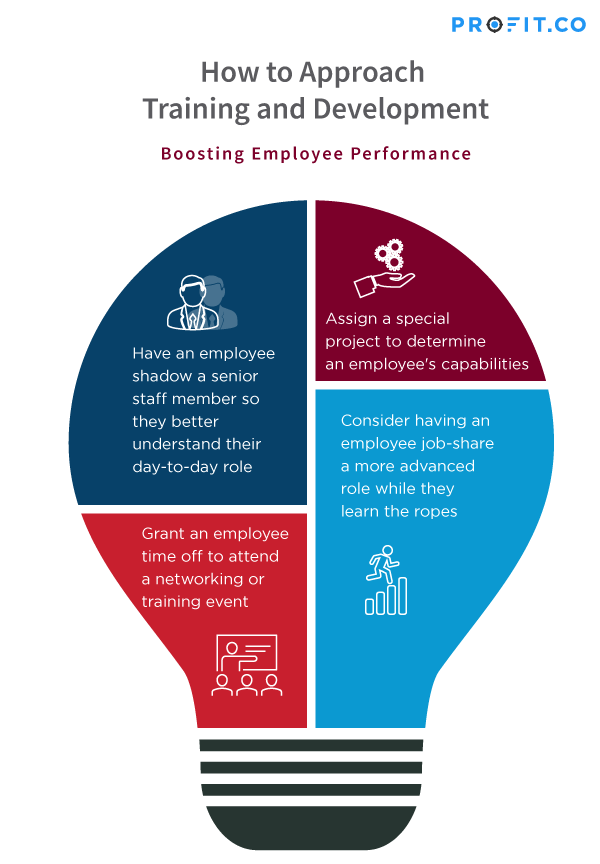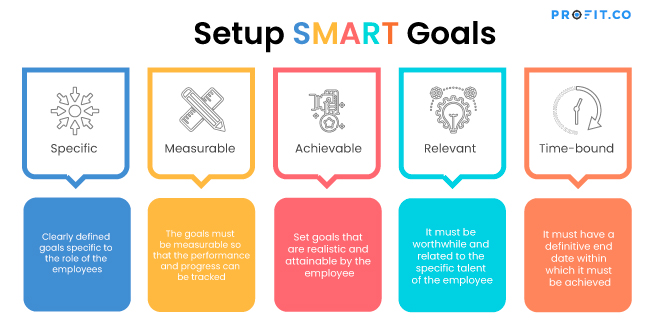It’s every manager’s responsibility to help their employees to shine and thrive professionally, which is why your organization must understand the importance of Performance Development Plans (PDP).
A great performance plan is the perfect coaching tool for managers to help employees feel more engaged with their work and therefore performing at a higher level. With a highly engaged workforce, you can maximise productivity and so, you can’t afford to ignore the PDP process.
However, that’s not to say that you can simply use a cut-and-paste professional development plan with every employee in your organization.
Success is almost totally dependent upon drive and persistence. The extra energy required to make another effort or try another approach is the secret of winning.
How Can Performance Development Plans Boost Performance?
For years, studies and research into employee performance and engagement have clearly shown that a personalized approach to performance management leads to happier and more engaged employees. As part of the PDP process, managers should be giving their employees timely feedback about their achievements and development to help keep them engaged with the workplace.
Gallup also found that employees that are allowed to exercise their strengths daily are, on average, 8% more productive and 6 times more engaged. The best way for managers to discover what an employee’s specific strengths are is through a personalized development plan that allows them to work towards the career goals and workplace aspirations they’re passionate about.
One of the first obvious signs that an employee is becoming disengaged with their work is a significant drop in their productivity and work quality. A performance plan helps these disengaged employees by giving managers a better insight into their normal standard of work, thus allowing them to help a newly disengaged employee before they become at risk of leaving their job.
It’s a common adage that employees don’t leave their job, they leave their managers. Gallup has found that 70% of the variance in employee engagement scores can be attributed to that employee’s manager, which shows that it’s vital for managers to be supportive of their employees and their passions. That’s why managers should be encouraged to use personalized development plans to help their employees to thrive at work.
What Should be Included in a Performance Development Plan?
If you’ve got managers wondering how to write a PDP, then these following steps can help them and you understand what makes performance plans effective.
Individualizing Your PDP Process
One of the most important things managers can do in their performance management process is to make sure each employee has a personalized performance plan in place. That starts with managers talking with their employees about their career goals, aspirations, strengths, and areas of improvement before a performance plan is established.
Once managers know what their employees want to achieve and improve upon, as well as their personality type and how they like to be managed, then managers can begin to work with their employees on a personal level.
Company Goals
The needs of your organization’s employees also have to be aligned with the company’s goals and objectives. When you or your managers are going through the PDP process, you need to understand what the company is looking for, both in the short and long term.
Knowing the changes your organization is looking to make can help you and your managers match employees with roles that suit them. For example, if your company is planning to open new locations and a manager knows one of their employees has aspirations to lead a sales team, then their performance plan can be tailored to include leadership training and development.
Understanding Employee Needs
One of the biggest mistakes that managers make with performance management plans is that they often mistake potential, willingness, and readiness. In other words, they might see an employee that has the potential to move into a certain role as being willing to, or an employee that’s ready for additional training as having the potential to improve.
As a quick example, Janet is willing to relocate to the business’ new location to lead the new sales team, and she’s ready for the training and transition to start. However, managers don’t think she has the potential to succeed in that role without more experience in her current position.
Given that employees need to be willing, ready, and have the potential to succeed for any improvements to have a meaningful impact, managers can use this to identify what further training or development an employee needs to reach their career goals.
Training and Development Pathways
Once managers understand what their employees’ goals are, and have a better measure of where they are in terms of their career development, then the next stage is to narrow down what training and development that employee needs to succeed.
It’s a common misconception that training and development is an expensive endeavor. While external training from industry professionals is massively beneficial in some industries, employees in other industries may benefit just as much from internal support.
However, no matter what training and development solutions are put in place, employees need to be engaged and willing to learn. That’s why it’s important to choose opportunities that fit with an employee’s personality and aptitude. Some out-of-the-box options may include:

- Shadowing a senior staff member
- Special projects and assignments
- Time off to attend a local networking event
- Job-sharing
Of course, training and development should also suit the company’s goals and objectives. If the company has an opening for more managerial positions, or they foresee the need for more senior, qualified staff in the future, then employees who are willing and ready to undertake this training should be encouraged to do so.
Individualized Goals
Whether an employee has a lot of behaviors that need improvement, or they’re a star employee looking to take on a bigger challenge, managers must use a performance development plan to set individual goals.
A tried-and-tested method that you’re likely to be familiar with is SMART goals, or goals that are:
- Specific,
- Measurable,
- Achievable,
- Relevant,
- Time-bound.
As an example, one employee wants to move into a sales leadership position in your company’s new location. One SMART goal that their manager decides to write in their performance development plan is:
“One day a week, Jane will work to draft a sales development plan for Location X to present it to the Sales Manager in 12 weeks”
Following the acronym, this is a SMART goal because it’s:

- Specific: It includes a definitive goal.
- Measurable: Jane’s manager can see if she’s completed this goal based on if the draft is completed.
- Achievable: It’s reasonable to expect a draft sales development plan to be completed in 12 weeks when working on it once a week.
- Relevant: Jane has aspirations to move into sales leadership at the company’s new location.
- Time-bound: Jane has a deadline of 12 weeks.
While it’s reasonable to expect that some companies may have goals that aren’t always individualized, such as in cases where employees are expected to perform to a certain measured level, SMART goals should be individualized to have the greatest impact.
Not only does this boost an employee’s performance by giving them the motivation to achieve their goals, but it also demonstrates that the organization is willing to invest in their future.
Timeframes and Deadlines
Every good performance plan needs to include information about when employees are expected to demonstrate a higher level of performance. While the SMART goals that managers set should have specific deadlines, the overall performance plan needs to discuss other aspects, such as when managers will check in with their employees and when training will be put in place.
Employees should also be aware of any key dates in their performance plan, which depending on the training and development in place, might involve exams, external events, or presentations.
A personal development plan that contains detailed information about timeframes and deadlines helps keep both employees and managers accountable throughout the PDP process.
Good Examples of SMART Performance Goals
As mentioned above, employees have to be willing, ready, and have the potential to meet a performance goal for it to be meaningful. Not only that, but their performance goals have to align with the company’s goals. After all, an employee might be entirely ready and willing to become a sales leader for a new location, but if the company doesn’t have plans to expand, then it becomes trickier to have this as a performance goal.
Managers should look to use the SMART goals system, which was discussed earlier, to develop performance goals. One of the many benefits of this system is that it can be used to create both overarching goals and milestones along the way, making it perfect for performance plans.
With that in mind, here are some good examples of performance goals that managers can use when helping employees with their performance plan.
- Jane will move to a Sales Manager position in October 2021 by achieving management qualifications and attending external sales conferences.
- By the end of the year, Simon will make 50 calls a day by time-blocking their calendar.
- Max will undertake an additional engineering qualification to be eligible for promotion in 2021.
- By August 2021, Summer will have improved the department’s conversion rate by 10% by implementing a new training programme.
- To improve her ticket response time, Sheena will spend one day a week studying for an IT qualification.
Why Continuous Performance Management is Vital?
Managers need to understand that for a performance development plan to work effectively, they need to continuously work with employees to implement it. A single annual review is no longer enough to help employees to meet performance goals, and new research is largely finding that monthly performance reviews are the key to increasing employee performance and engagement.
With that in mind, it is important for managers and employees to regularly review performance plans. Regular reviews don’t only help managers keep their employees on track, but also to change aspects of a personalized performance development plan should it not be working as intended.
Research shows that caring about employees is the number one driver of employee engagement, and regular reviews and feedback are key to demonstrating that both managers and the company at large care about their employees’ development and future. Not only that, but it gives employees more of a chance to build a relationship with their manager, which leads to greater levels of trust and respect in the workplace.
Also, constant communication ensures that managers can respond to any roadblocks or obstacles that employees are facing when they’re working towards performance goals. No manager knows entirely what happens in an employee’s personal life, so it’s important that if an employee is struggling, they have a channel of communication with someone who’s in a position to help.
Performance Development in Profit.co
The Profit.co’s performance management module enables HR administrators to conduct organized, detailed, and efficient performance reviews in their organization.
Based on performance review results, HR administrators and managers can determine if that employee is ready for an Individual Development Plan (IDP). This feature allows reviewers and the reviewed employee to construct a specific plan that will help them gain the skills and development necessary to move to the next level of their career within the company. Employees on an IDP are assigned a coach or mentor to help along their development.
Alternatively, if an employee is lacking certain skills necessary for their professional success, HR administrators and managers can initiate a Performance Improvement Plan (PIP). Similarly, employees are assigned a mentor to watch their development, and certain tasks, trainings, or targets must be fulfilled in order for the employee to meet the standards necessary to continue working in their position.
Boosting Performance with the PDP Process: In Conclusion
Performance plans are one of the best ways to boost employee performance in the workplace, but managers need to make sure that they’re personalizing these plans as much as possible. In these plans, managers should not only take into account company goals, but employee aspirations, personality types, management preferences, and readiness to improve.
There are endless possibilities to help employees to improve their performance, but it requires managers to think outside the box when it comes to training and development. Some employees might not perform well in exams but are more engaged with shadowing a colleague, and vice versa.
However managers decide to pursue a personalized performance development plan, they need to ensure that they’re regularly reviewing this with their employees. Not only is this a great way to build a relationship with their employees, but also to ensure that they can nip any issues in the bud as soon as they appear.

